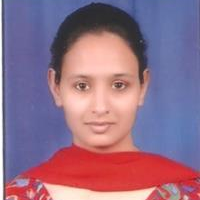International Journal of Image, Graphics and Signal Processing (IJIGSP)
IJIGSP Vol. 7, No. 2, 8 Jan. 2015
Cover page and Table of Contents: PDF (size: 888KB)
Hybrid of Fuzzy Logic and Random Walker Method for Medical Image Segmentation
Full Text (PDF, 888KB), PP.23-29
Views: 0 Downloads: 0
Author(s)
Index Terms
Image Segmentation, Random Walker for medical images, Fuzzy Logic
Abstract
The procedure of partitioning an image into various segments to reform an image into somewhat that is more significant and easier to analyze, defined as image segmentation. In real world applications, noisy images exits and there could be some measurement errors too. These factors affect the quality of segmentation, which is of major concern in medical fields where decisions about patients’ treatment are based on information extracted from radiological images. Several algorithms and techniques have developed for image segmentation and have their own advantages and disadvantages. Random walker method is a supervised segmentation method and it requires that it should be more efficient in producing effective segmentation results in case of medical images which are complex images. In the present paper, we are going to incorporate the advantages of fuzzy logic with a random walker to make resulting segmentation better in texture and quality. For this, we will use fuzzy rules to approximate boundaries in images which will improve segmentation results.
Cite This Paper
Jasdeep Kaur, Manish Mahajan,"Hybrid of Fuzzy Logic and Random Walker Method for Medical Image Segmentation", IJIGSP, vol.7, no.2, pp.23-29, 2015. DOI: 10.5815/ijigsp.2015.02.04
Reference
[1]Rafael C. Gonzalez, Richard E. Woods, “Digital Image Processing”, 2nd ed., Beijing: Publishing House of Electronics Industry, 2007
[2]K. K. Singh, A. Singh, “A Study of Image Segmentation Algorithms for Different Types of Images”, International Journal of Computer Science Issues, Vol. 7, Issue 5, 2010
[3]N. R. Pal, S. K. Pal, “A Review on Image Segmentation Techniques”, Pattern Recognition, Vol. 26, No. 9, pp. 1277-1294, 1993.
[4]W. X. Kang, Q. Q. Yang, R. R. Liang, “The Comparative Research on Image Segmentation Algorithms”, IEEE Conference on ETCS, pp. 703-707, 2009.
[5]H. Zhang, J. E. Fritts, S. A. Goldman, “Image Segmentation Evaluation: A Survey of unsupervised methods”, computer vision and image understanding, pp. 260-280, 2008.
[6]H. G. Kaganami, Z. Beij, “Region Based Detection versus Edge Detection”, IEEE Transactions on Intelligent information hiding and multimedia signal processing, pp.1217-1221, 2009.
[7]P. Doyle, J. L. Snell: Random Walks and Electric Networks, Mathematical Association of America, 1984.
[8]“Neural network, Fuzzy Logic and Genetic Algorithms synthesis and applications”, by S. Rajasekaran and G.A. VijaylakshmiPai, (2005), Prentice-Hall, Chapter 7, page 157-221.
[9]“Introduction to Fuzzy Sets and Fuzzy Logic”, by M Ganesh, (2008), Prentice-Hall, Chapter 9-10, Page 169-233.
[10]“Fuzzy Sets and Fuzzy Logic: Theory and Applications”, by George J. Klir and Bo Yuan, (1995), Prentice-Hall, Chapter 12-17, Page169-233.
[11]“Fuzzy Logic: Intelligence, Control, and Information”, by John Yen, Reza Langari, (1999), Prentice-Hall, Chapter 5-15, Page 120-603.
[12]“Fuzzy Logic with Engineering Applications”, by Timothy Ross, (2004), John Willy and Sons Inc, Chapter 5-15, Page 120-603.
[13]K. K. Singh, A. Singh, “A Study of Image Segmentation Algorithms for Different Types of Images”, International Journal of Computer Science Issues, Vol. 7, Issue 5, 2010.
[14]TorbenPatz and Tobias Preusser,” Segmentation of Stochastic Image with a Stochastic Random Walker Method”, IEEE trans. Based on image processing, 21(5), 2012.
[15]J. Shi and J. Malik, “Normalized cuts and image segmentation,” IEEEPAMI, vol. 22, no. 8, pp. 888–905, Aug. 2000.
[16]Y. Boykov, O. Veksler, and R. Zabih, “A new algorithm for energy minimization with discontinuities,” in Energy Minimization Methods in Computer Vision and Pattern Recognition. Second International Workshop, EMMCVPR’99, York, UK, 26-29 July 1999. H.-E.-R. Pelillo-M., Ed., 26–29 July 1999, pp. 205–220.
[17]M. J. Black, G. Sapiro, D. H. Marimont, and D. Heeger, “Robust anisotropic diffusion,” IEEE Transactions on Image Processing, vol. 7,no. 3, pp. 421–432, March 1998.
[18]X. Zhu, J. Lafferty, and Z. Ghahramani, “Combining active learning and semi-supervised learning using Gaussian fields and harmonic functions” in Proceedings of the ICML 2003 workshop on The Continuum from Labeled to Unlabeled Data in Machine Learning and Data Mining,2003, pp. 58–65.
[19]L.Grady: Random Walks for Image Segmentation, IEEE Trans. on Pattern Analysis and Machine Intelligence, Vol. 28, No. 11, pp. 1768–1783, Nov., 2006.
[20]Hong Ying Yang, Xiang Yang Wang, Qin Yan Wang, Xian Jin Zhang, “LS-SVM based image segmentation using color and texture information,” J.Vis.Commun. Image R, 23 1095-1112, 2012.

